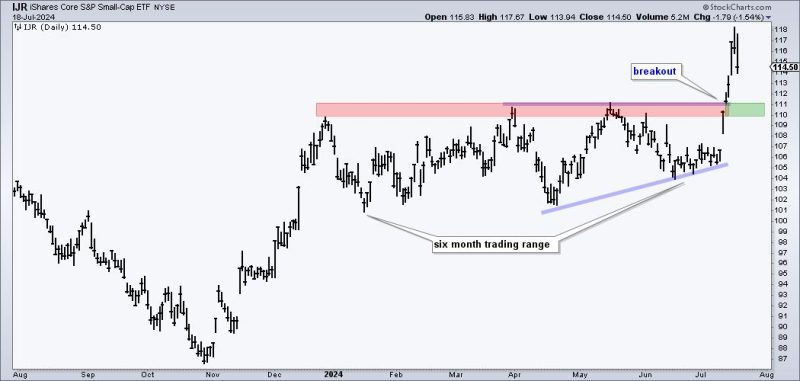
Rising Stars: Small-caps Break Free and Take The Lead – What’s Next?
Small-cap stocks are currently experiencing a breakout and are leading the way in the investment world. The recent surge in value of these small-cap stocks is turning heads in the investment world, and many are wondering, now what?
To understand the current situation, let’s first break down what small-cap stocks are. In finance, a small-cap (or small capitalization) stock is a publicly-traded share in a company with a relatively small market capitalization – typically between $300 million to $2 billion. Such companies are considered risky due to their unstable growth prospects, limited resources, and their susceptibility to economic downturns. However, they offer potential for exceptional growth that may not be found with larger, more established companies.
The breakout of small-cap stocks in current financial markets has been largely due to their notable performance amidst the global pandemic crisis. During the pandemic, many small companies adapted swiftly and innovatively to the disruptive market conditions, faster than their larger counterparts who were bogged down with complex business structures. These small companies have also benefited significantly from financial stimuli provided by governments worldwide to keep economies aflame in the storm.
Now, navigating this newfound growth requires strategic planning and foresight. Firstly, investors need to keep in mind that despite the current strong performance, small-cap stocks are inherently risky. This means that while the potential for high returns is there, the potential for significant loss is also a stark reality. Hence, it is crucial to diversify one’s portfolio and not rely solely on small-cap stocks for returns.
Secondly, monitoring key market indicators will be vital. This aids in understanding market trends and predicting potential shifts, providing an advantage when making investment decisions. Key market indicators to monitor include interest rates, inflation trends and economic growth predictions.
Research is paramount in sustaining this small-cap breakout momentum. This involves conducting comprehensive research into individual small companies. It includes examining their business model, sector positioning, competitive advantage, and financial health. Such detailed research can enable investors to discern between companies that are likely to sustain their growth in the long term and those that are simply experiencing short-term success.
Another important factor is market sentiment. In times of market euphoria, small-cap stocks could outperform the market significantly, but, correspondingly, they could also fall hard during times of market despair. Therefore, understanding and gaiving the general market sentiment could provide cues in determining investment moves.
In conclusion, while the recent breakout of small-cap stocks has presented exciting opportunities, it’s important to approach these
